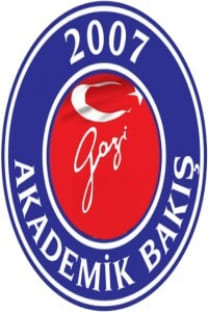Kosova’da Yeniden Yapılandırma Çalışmaları Kapsamında Bugünkü Durum
Kosova, Yeniden Yapılandırma, UNMIK, Milliyetçilik, Güvenlik.
The Present Situation Within the Coverage of Reconstruction Efforts in Kosovo
Kosovo, Reconstruction, UNMIK, Nationalism, Security.,
___
- ARI, Tayyar- Pirinççi Ferhat, “Soğuk Savaş Sonrasında ABD’nin Balkan Poli- tikası”, Alternatif Politika, Cilt: 3, Sayı: 1, 1- 30 Mayıs 2011,s.1- 30.
- BASKIN, Mark, “Post-Conflict Administration and Reconstruction”, Interna- tional Affairs, Volume 79, Number 1, Jaunary 2003, ss. 161-170.
- BENNET, Alvin Leroy - OLİVER, James K., International Organizations: Princip- les and Issues,Prencite Hall, New Jersey, 2002.
- COŞKUN, Demirtaş Birgül, “Kosova’nın Bağımsızlığı ve Türk Dış Politikası”, Uluslararası İlişkiler Dergisi, Cilt: 7, Sayı: 27, Güz 2010, ss. 51- 86.
- HİLL, Chiristopher and SMİTH Karen, European Foreign Policy, Key Docu- ments Routledge, London and Newyork, 2000.
- HUNGTİNGTON, Samuel, Medeniyetler Çatışması, Der: Murat YILMAZ,Vadi Yay., İstanbul, 1996.
- İnsan Hakları Gündemi Derneği, “Kriz Bölgelerinde İnsan Hakları Sorunları, Bosna Hersek- Kosova- Makedonya Raporu 2010”, Ekim 2010.
- KARPAT, Can, “Ötekiler: Arnavut Olmayanların Kosovası”, AIA Türkiye ve Balkanlar Masası, Özel Notlar, 2010.
- KAY, Sean, “NATO, The Kosovo War and Neoliberal Theory”, Contemporary Security Policy, August 20004, Vol: 25, No: 2, s. 252- 279.
- KRAUS, Josef, “In Ihrem Einsatz für den Europaischen Frieden Geht die Bun- deswehr an ihre Kraftgrenzen”, Die Politische Meinung, Nr. 367, April 2000,ss. 46- 50.
- RODMAN, Peter, “ The Fallout form Kosova”, Foreign Affairs, Vol: 78, No: 4, July- August, 1999, ss. 45- 51.
- SLOAN, Elinor C., Bosnia and New Collective Security, Wesport, Praeger Publishers, 1998. İnternet Kaynakları
- Johan Hamre and Gordon Sullivan, “Toward Post Conflict Reconstruction”
- http://www.twg.com/ 02autumn/hamre.pdf, Johan ”,Erişim Tarihi: 9 Eylül 2009.
- World Bank, “Post Conflict Reconstruction: The Role of the World Bank”, http: // www.publications.worlbank.org/ catalog/ cantent-download?revision_ id=334431,Erişim Tarihi: 8 Ocak 2009.
- World Bank, : “Conflict Resolution”, http://www.worldbank.org/wbi/commu- nityempowerment/Modules/ConflictConsensus.html,Erişim Tarihi: 8 Mart 2010.
- “KFOR Kuzey Kosova Sınırında Kontrolü Ele Aldı”, http://www.setimes. com/cocoon/setimes/xhtml/tr/features/setimes/features/2011/07/29/featu- re-02, Erişim Tarihi: 1 Ağustos 2011.
- “Kosova’da Entegrasyon mu Asimilasyon mu?”, http://www.diplomatikgoz- lem.com/TR/belge/1-5343/kosovada-entegrasyon-mu-asimilasyon-mu.html, Erişim Tarihi: 7 Nisan 2010.
- “EULEX Kosova’da Göreve Başladı”, http://www.setimes.com/cocoon/setimes/ xhtml/tr/features/setimes/features/2008/12/10/feature-01, Erişim Tarihi: 8 Mart 2010. -“Kosova Yeniden Yapılanıyor”,
- http://www.dw-world.de/dw/artic
- le/0,,3157841,00.html, Erişim Tarihi: 20 Temmuz 2011.
- “Kosovo Non-majority Communities Within the Primary and Secon- dary Educational Systems”, http://www.osce.org/search/apachesolr_search/ kosova?page=3,Erişim Tarihi: 3 Temmuz 2011.
- http://daccessdds.un.org/doc/UNDOC/GEN/N99/172/89/PDF/N9917289. pdf?OpenElement,Erişim Tarihi: 15 Ekim 2009.
- “UN Security Council- Report of the Secretary-General on the United Na- tions Interim Administration Mission in Kosovohttp://www.unmikonline.org/ SGReports/S2011514.pdf , s. 8- 9,Erişim Tarihi: 10 Eylül 2011.
- TÜRBEDAR, Erhan, “Sırbistan Kosova Siyasetini Sorguluyor”, 26 Eylül 2011, http:// www.avim.org.tr/degerlendirmetekli.php?makaleid=5011,Erişim Tarihi: 29 Eylül 2011.
- “Kosova’nın Bölgesel Temsili Konusunda Anlaşma Sağlandı”, http://www. setimes.com/cocoon/setimes/xhtml/tr/features/setimes/features/2012/02/25/ feature-01,Erişim Tarihi: 1 Mart 2012.
- “PROGONOTİ, Erjada, “Kosova Kargaşasında: ‘Cui Prodest’ http://www.us- gam.com/index.php?l=800&cid=540&bolge=11,Erişim Tarihi: 23 Nisan 2012.
- PROGONOTİ, Erjada, “Sırbistan Seçimleri: Kosova’da Yüksek Gerilim”, http://www.usgam.com/index.php?l=800&cid=602&bolge=0&konu=, Tarihi: 1 Mayıs 2012. Erişim
- “EULEX”, http://www.eulex-kosovo.eu/en/info/whatisEulex.php,Erişim Ta- rihi: 10 Eylül 2010.
- “Facts and Figures”, NATO, http://www.nato.int/kosovo/history.htm,Erişim Tarihi: 20 Haziran 2011.
- “Sırbistan’da Artık AB Üyeliğine Aday”, Milliyet, 2 Mart 2012.
- ISSN: 1307-9778
- Yayın Aralığı: 2
- Başlangıç: 2007
- Yayıncı: Hale Şıvgın
Yunan Tahribatına Amerikalı Misyonerlerin Bakışı ve Bir Raporun Arka Planı
Afganistan’da Geçiş Safhası, Bölge Ülkeleri ve 2014 Sonrası Öngörüler
Mehmet Seyfettin EROL, oktay BİNGÖL
Atatürk’ün Ankara’ya gelişi: “Milli temsil meselesi''
Konya’ya İskân Edilen Arap Mülteciler (1920-1928)
Kosova’da Yeniden Yapılandırma Çalışmaları Kapsamında Bugünkü Durum
Türkiye’de Nükleer Güç Santrali Kurulması ve Dış Politikaya Olası Etkileri
İzmit’te (Nicomedia) Amerikan Misyoner Faaliyetleri
